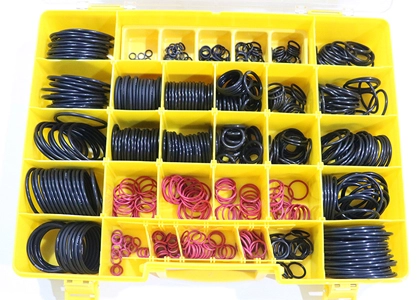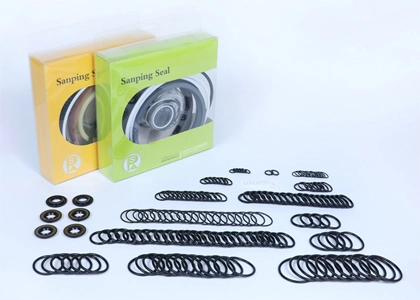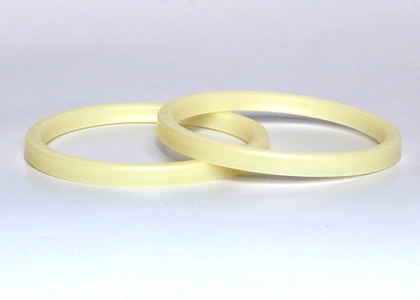Common oil seal materials are nitrile rubber, fluorine rubber, silicone rubber, acrylic rubber, polyurethane, polytetrafluoroethylene and so on.
It has good heat and wear resistance, resistance to all kinds of lubricating oil, grease, oil and gas mixture, suitable for temperature -30~120 degrees Celsius, but can not be used in phosphate ester hydraulic oil and gear oil containing extreme pressure additives, stable performance in gasoline and low aniline point mineral oil.
Excellent oil resistance, heat resistance, wear resistance, ozone resistance, UV radiation resistance, especially resistance to extreme pressure liquid agent lubricating oil, gear oil, motor oil, oil, petroleum hydraulic oil, suitable for -30~150 degrees Celsius range of work.
Ageing resistance, heat resistance, and oil resistance are almost suitable for all lubricating oil, fuel oil, and gasoline, in the oil containing extreme pressure additives is not easy to harden, but cold resistance and high-temperature wear resistance is poor, permanent compression deformation is larger, suitable for temperature -20~250 degrees Celsius.
With outstanding high and low-temperature resistance, can be used at 150 degrees Celsius for a long time without performance changes; It can be used continuously for 10000h at 200 ℃ and can maintain its unique advantages of elasticity, ozone resistance, weather resistance and so on in the working temperature range of -70~260.
It has outstanding chemical stability, thermal stability, antifriction and self-lubrication, and its cracking temperature is above 400. Therefore, it is able to operate in the temperature range of -200 to 300 degrees Celsius. In addition to free fluorine and alkali metals, it has excellent corrosion resistance to chemicals, solvents, hydrogen and oxygen compounds and acids.
Nitrile rubber and fluorine rubber materials are widely used oil seal, the former cost is low, but the temperature resistance and sealing has been significantly improved, but the cost is higher, and there is still some bad commonality of ordinary rubber materials, such as poor wear resistance, short service life, especially sensitive to the eccentric reaction of the shaft, leakage phenomenon is still more common. PTFE oil seal is a kind of high technical content product, which is the future direction of oil seal development. At Sanping, a premier machinery parts factory, we understand the importance of using the right materials for oil seals, and we offer custom oil seals designed to meet the unique needs of your machinery. Our China piston seal and PC 200 travel motor seal kit are crafted with precision and quality, ensuring optimal performance and longevity of your equipment. With products like the LBH seal and skeleton oil seal, we continue to set the standard for high-performance machinery components, contributing to the efficiency and reliability of your operations.
When selecting the material for the oil seal, it is necessary to consider the compatibility of the material with the working medium, the adaptability to the working temperature range and the ability of the lip edge to follow the rotation axis at high speed. Generally, the temperature of the lip edge of the oil seal is 20~50℃ higher than the temperature of the working medium. Attention should be paid to the selection of oil seal materials. The working range of oil seals depends on the materials used: -40~120℃ for NBR, -30~180℃ for Alic rubber (ACM), and -25~300℃ for fluoro rubber (FPM).

4C4784 O Ring Kit Box Fits Excavator

Control Valve Seal Kit Fits PC120-5 Excavator

ISI Rod Seal Fits Excavator